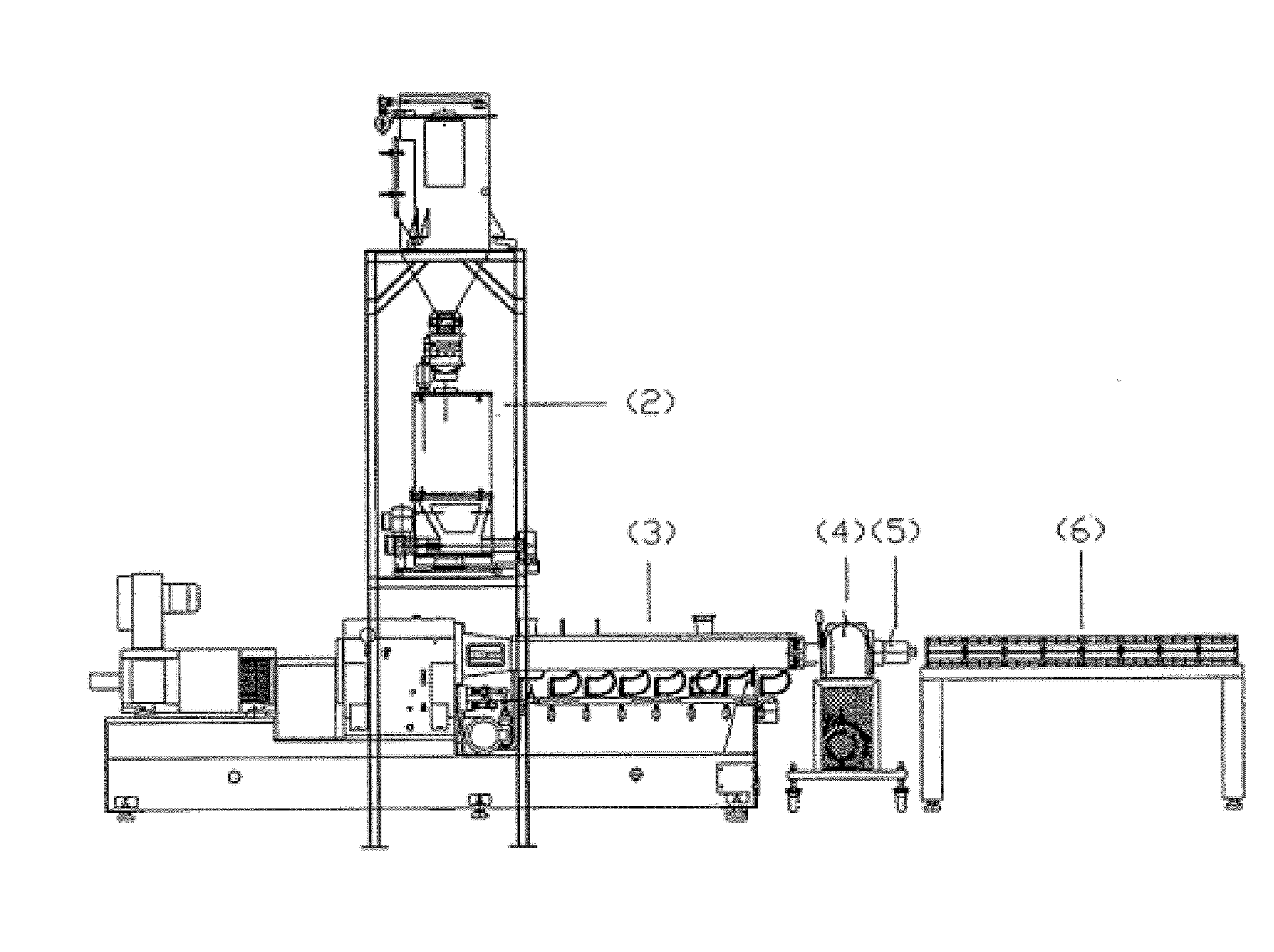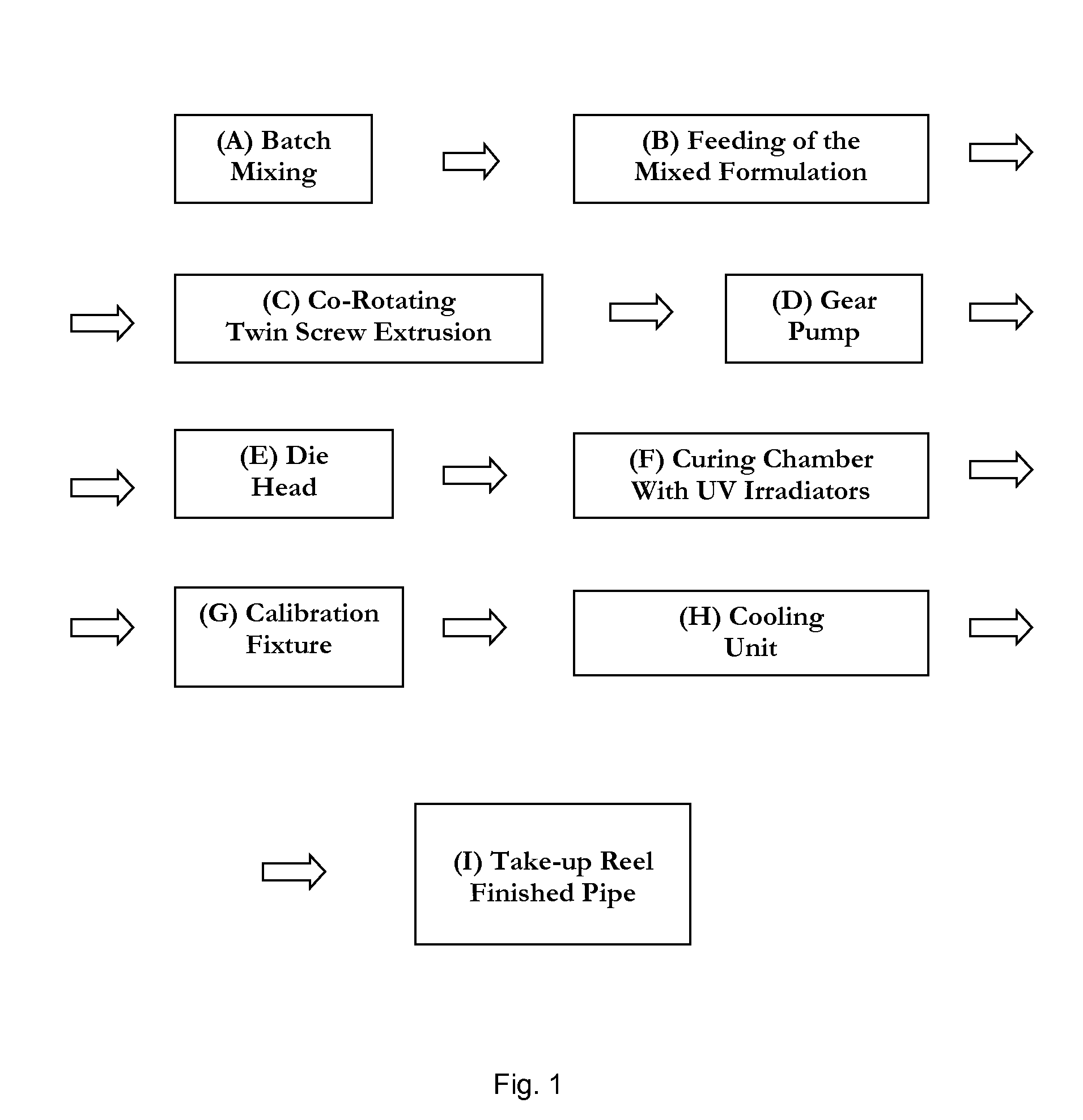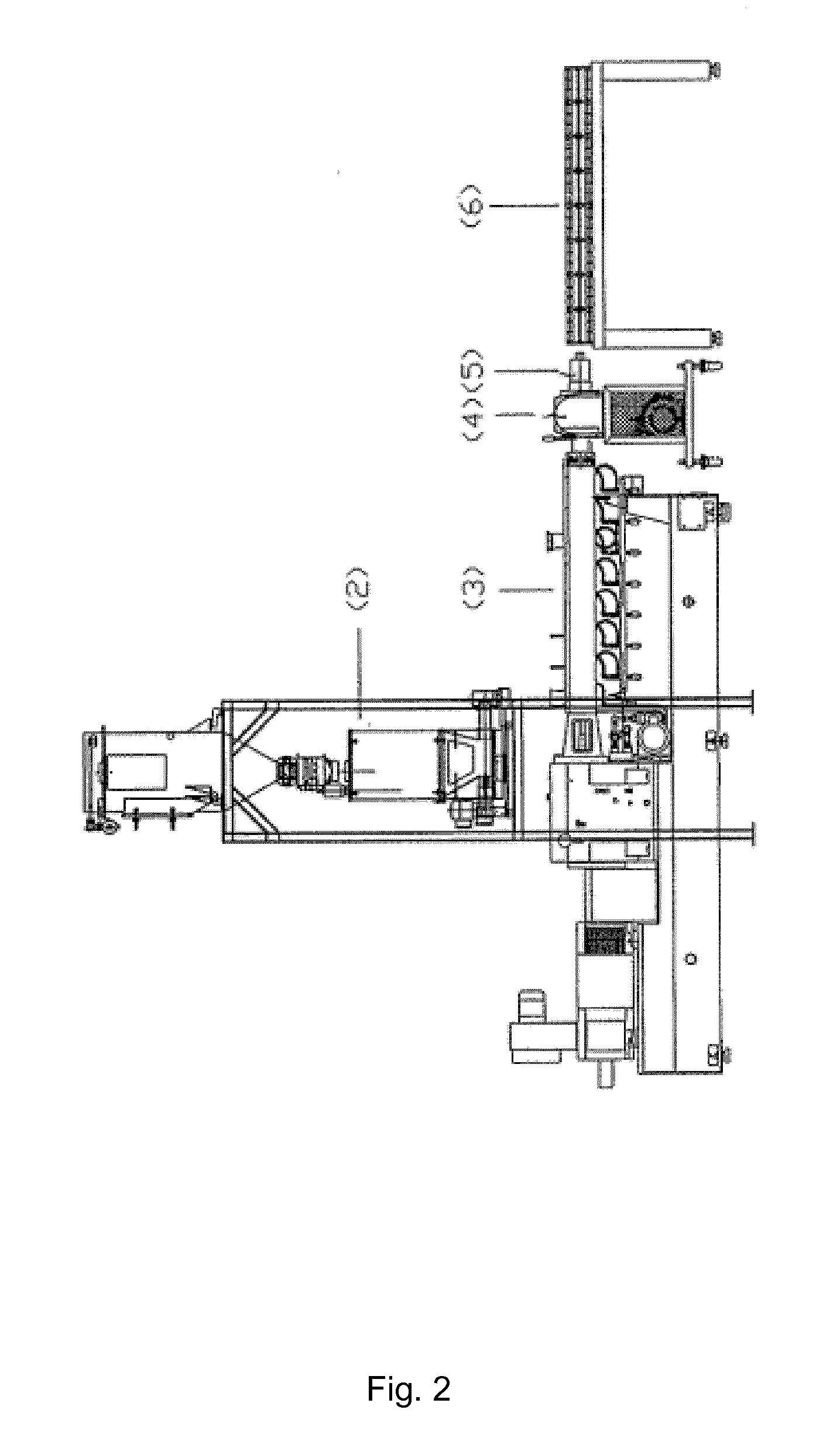Polyolefin Pipe
a polyolefin and pipe technology, applied in the direction of pipes, pipes/joints/fittings, mechanical equipment, etc., can solve the problems of reducing the resistance of oxidative degradation, the difficulty of using plastic pipes in drinking water applications, and the potential problem of various additives, etc., to achieve excellent resistance to chlorine, reduce the level of leaching of chemical residuals, and increase the resistance to oxidative degradation
- Summary
- Abstract
- Description
- Claims
- Application Information
AI Technical Summary
Benefits of technology
Problems solved by technology
Method used
Image
Examples
example 1
Direct Injection
[0203]A trial was conducted to test the concept of direct injection of additives into the extruder. The set up included using a 27 mm twin screw extruder, a witte gear pump, and a spider-design die head to form ½″ tubing. The tubing was then crosslinked by exposure to UV irradiation. The HDPE base resin, along with processing aid, was added to the extruder via the extruder's feed throat entry point. For all other additives, a blend of 4 components (photoinitiator, co-agent, anti-oxidant, hindered amine light stabilizer), was premixed as a homogeneous liquid, which was directly injected into the extruder via an injection port in one of the upstream barrels. Direct injection into the extruder allowed for no pre-mixing of these components with HDPE resin and processing aid. Mixing of these 4 components with HDPE resin and processing aid occurred strictly from the mixing elements within the twin screw extruder.
[0204]An initial baseline experiment was performed, which inv...
example 2
Pipe Formulations
[0208]Formulation 1
Raw Material / Chemical CompoundCAS #MwWt. %PE; MFI = 10; Basell Q471 (lowa)25213-02-9N / A97.95Photoinitiator = Benzophenone119-61-9182.220.75Co-Agent = Triallyl Cyanurate101-37-1249.270.75Antioxidant = Irganox 10106683-19-811780.40HALS = Chimassorb 944 LD70624-18-92000-31000.10Processing aid = FX 9613NANA0.05TOTAL100
CCL: 77%
[0209]Note: NSF 61 not determined.
[0210]Formulation 2
Raw Material / Chemical CompoundCAS #MwWt. %PE; MFI = 10; Basell Q471 (lowa)25213-02-9N / A98.16Photoinitiator = Benzophenone119-61-9182.220.6Co-Agent = Triallyl Cyanurate101-37-1249.270.6Antioxidant = Irganox 10762082-79-3531.000.5HALS = Chimassorb 944 LD70624-18-92000-31000.1Processing aid = FX 9613NANA0.04TOTAL100
CCL: 74%
[0211]Note: NSF 61 not determined.
[0212]Formulation 3
Raw Material / Chemical CompoundCAS #MwWt. %PE; MFI = 10; Basell Q471 (lowa)25213-02-9N / A97.30Photoinitiator = Omnipol BP515136-48-87301.00Co-Agent = Polybutadiene (Ricon 152)9003-17-2~29001.00Antioxidant = Irga...
example 3
Line Speeds and Extruder Output
[0252]Pipes have been manufactured on a co-rotating twin screw extruder in accordance with the methods of the invention for various pipes sizes. Exemplary line speeds and extruder outputs were as follows:
½″ pipe: 30 m / min, 142 kg / h
1″ pipe: 23 m / min, 348 kg / h
2″ pipe: 6.5 m / min, 342 kg / h
4″ pipe: 2 m / min, 350 kg / h
[0253]These represent a greater than 10-fold increase in line speed (m / min) and output (kg / h) when compared to the typical output of a RAM extrusion method.
PUM
| Property | Measurement | Unit |
|---|---|---|
| Fraction | aaaaa | aaaaa |
| Fraction | aaaaa | aaaaa |
| Fraction | aaaaa | aaaaa |
Abstract
Description
Claims
Application Information
 Login to View More
Login to View More - R&D
- Intellectual Property
- Life Sciences
- Materials
- Tech Scout
- Unparalleled Data Quality
- Higher Quality Content
- 60% Fewer Hallucinations
Browse by: Latest US Patents, China's latest patents, Technical Efficacy Thesaurus, Application Domain, Technology Topic, Popular Technical Reports.
© 2025 PatSnap. All rights reserved.Legal|Privacy policy|Modern Slavery Act Transparency Statement|Sitemap|About US| Contact US: help@patsnap.com



